Duke Engines Multiple Applications
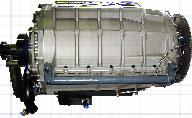
As well as Automotive applications the Duke Engine lends itself well to Marine, Aircraft and Generator/Utility Range Extender options. The output shaft, being 'geared down' to 5/6 of the piston reciprocating speed, allows the 'engine-out' torque to be higher and maximum torque to be developed at lower speeds. The Duke Engine is generally well suited to many applications of 40kW or greater.
MARINE
The axial arrangement of the Duke engine lends itself well to marine outboard (vertical shaft) and Inboard (horizontal shaft) applications.
The maximum torque/power characteristics at low speed of the Duke engine are often desired in marine applications and may allow for less gear ratio change, resulting in potentially smaller, lower-drag transmission housings around the lower drive leg.
In general, the Duke engine would be best suited to marine applications of approx 50kW or greater, with the low vibration from the Duke providing performance benefits in all marine applications. The Duke engine's counter rotating cylinder group and crankshaft enable partial or complete cancellation of gyroscopic torque reactions, offering another benefit to applications where high speed manoeuvrability is required.
OUTBOARD
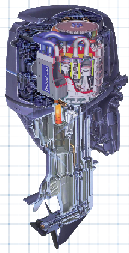
The Duke engine in a vertical shaft application presents all the manifold, fuel and ignition system on its upper face, allowing simple service access. With exhaust porting on the upper face of the engine an effective riser feature is intrinsic, effectively preventing water entering the engine from the exhaust system. This eliminates the need for a heavier external riser as found on traditional outboard engines.
The lower weight potential of a Duke engine is highly attractive to reduce both outboard weight and transom loads. The narrower width engine of the Duke compared to conventional V configuration engines found in larger outboards will enable tighter engine spacing with multiple outboard installations.
INBOARD
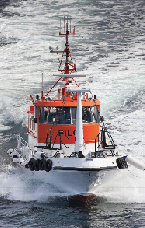
This combination of lighter weight, simple design and high engine torque enables a 4-stroke Duke engine to possess some of the desirable characteristics and benefits traditionally associated with 2-stroke engines while complying with 4-stroke legislative market requirements.
The service access items on the engine are concentrated on the front face of the engine in this application, allowing convenient access even when engines are close coupled to the transom.
In a horizontal shaft installation, the Duke engine offers a very low profile, a low centre of gravity and low weight that will improve the options for installing the engine under deck or seating. All of which offer benefits to craft handling and performance.
Multiple Applications continued –
AIRCRAFT
Low weight and small package size are obvious benefits in aircraft and a spark ignition Duke engine operating on kerosene offers a development potential that will be appreciated by civil and military applications alike.
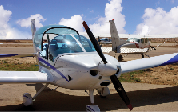
The cylindrical shape of the Duke engine lends itself well to installation in small cowlings with lower drag, and the superior balance and vibration characteristics of the axial Duke engine will be appreciated in many aerospace applications, leading to lower airframe vibration, fatigue and mount isolation requirements.
These characteristics combine to offer a prospect of a Duke reciprocating engine being a viable alternative to some current smaller turbo shaft propulsion and auxiliary power unit applications.
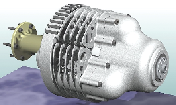
Duke's counter-rotating cylinder group offers partial cancellation of gyroscopic torque reactions. The Duke output shaft being intrinsically “geared down” to 5/6 of the piston reciprocating speed allows the engine out torque to be higher and max power developed at lower speeds.
This combination of the Duke engine’s unique features would allow a Duke engine to produce a higher output and turn a larger propeller before high tip speeds required the use of a gear box.
Once again the 'geared down' output shaft of the Duke delivers higher engine-out torque and maximum power is developed at lower speeds is significant.
OTHER APPLICATIONS
These characteristics may be useful in applications where the required speed is fixed as with some AC generators for example. The cylindrical package shape is similar to electrical generator configurations and offers the opportunity of a compact and efficiently packaged overall machine.
The light weight of the Duke will be of particular benefit where generators or pumps are required to be air or manually transportable, for example in Emergency services or military applications. And the potential to operate on kerosene is highly desirable, something not widely available in standard smaller, lightweight generators.
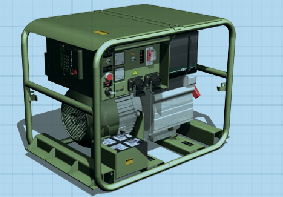
APUs are another application area where Duke technology can provide significant advantages.
